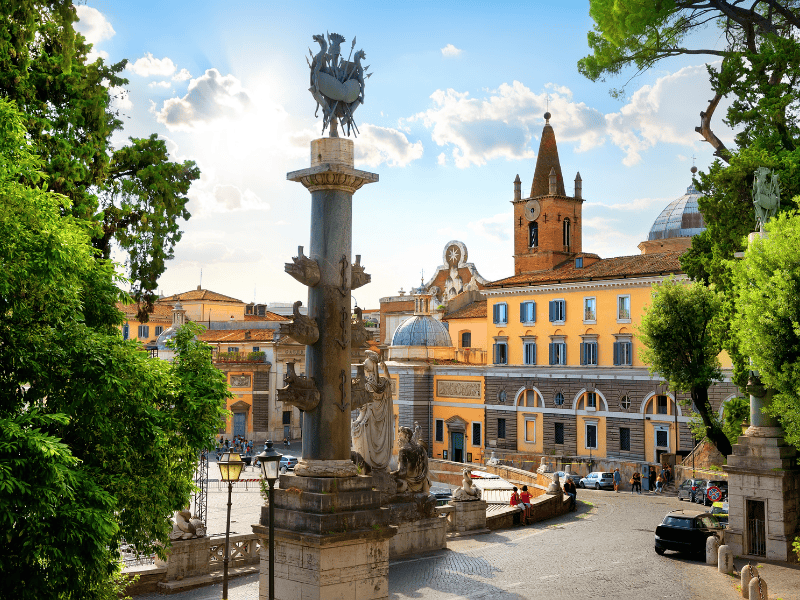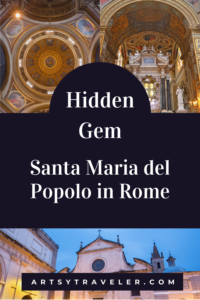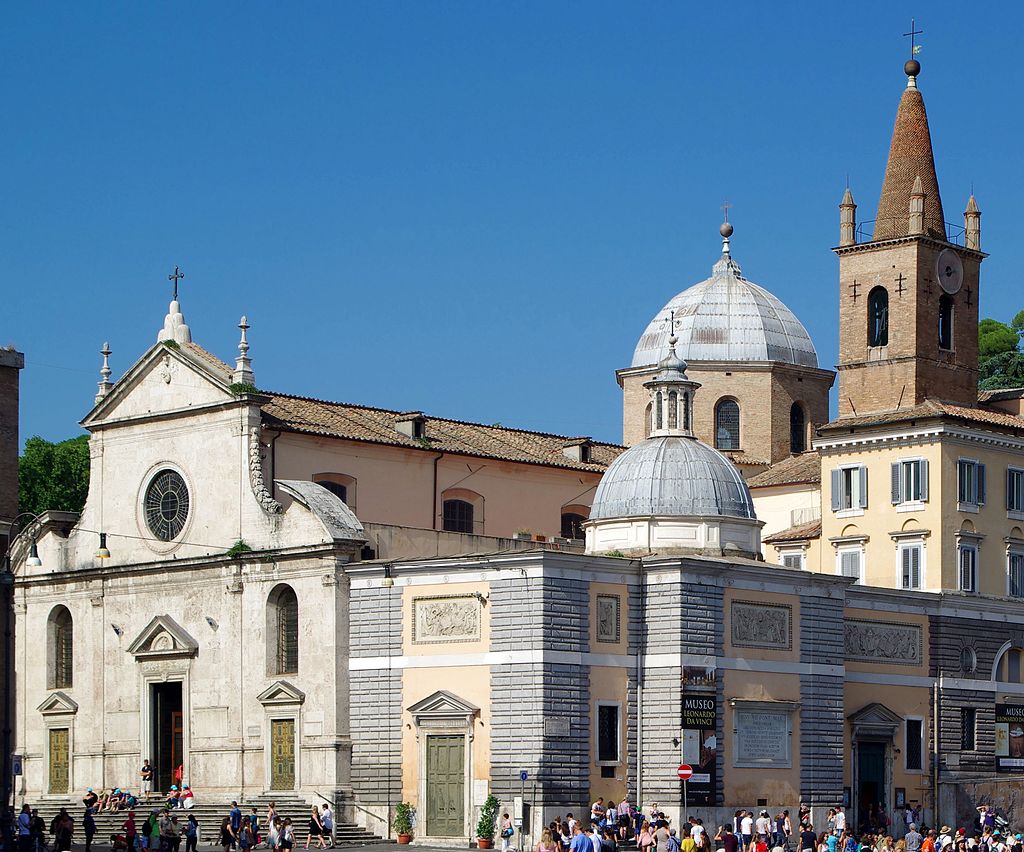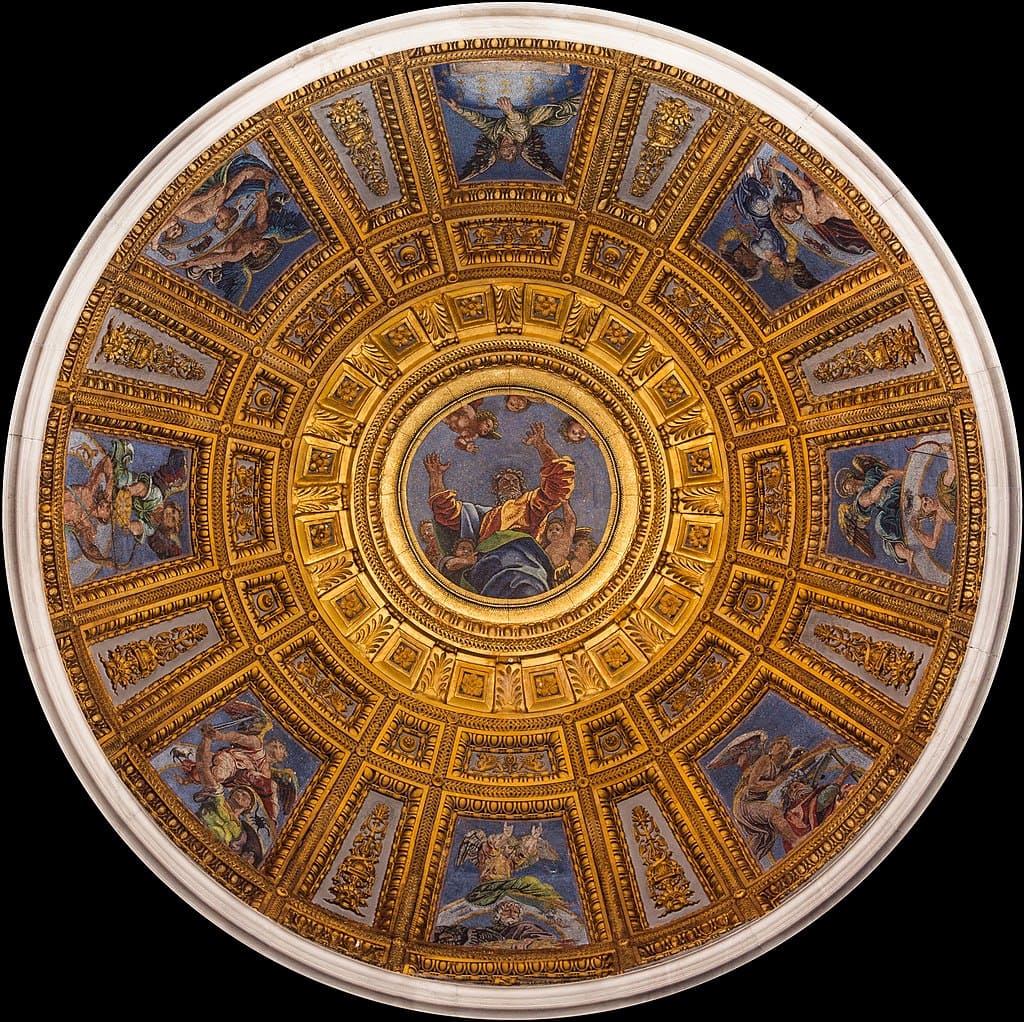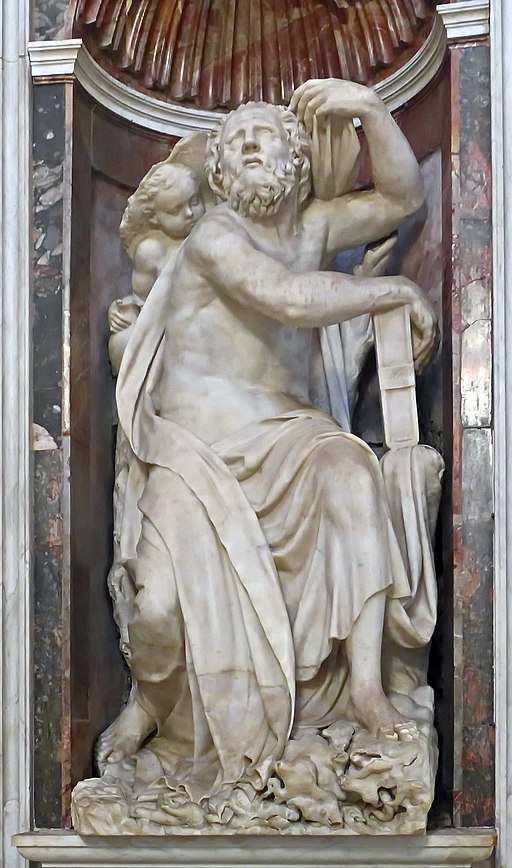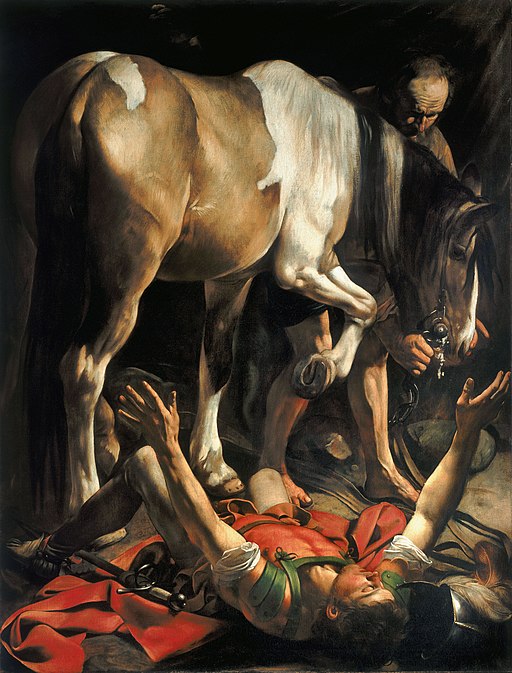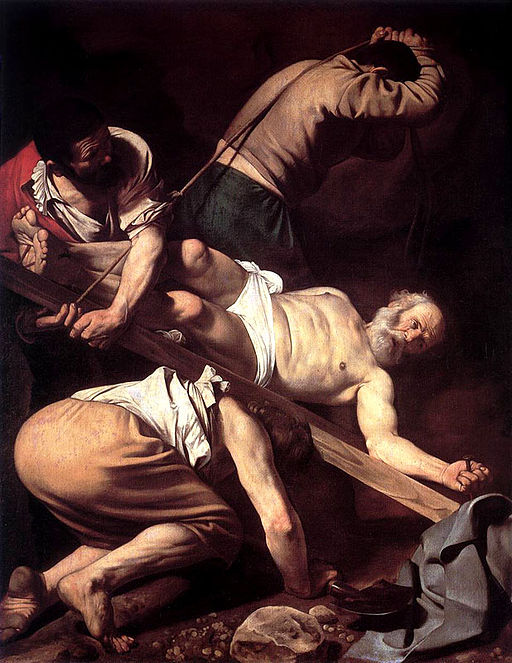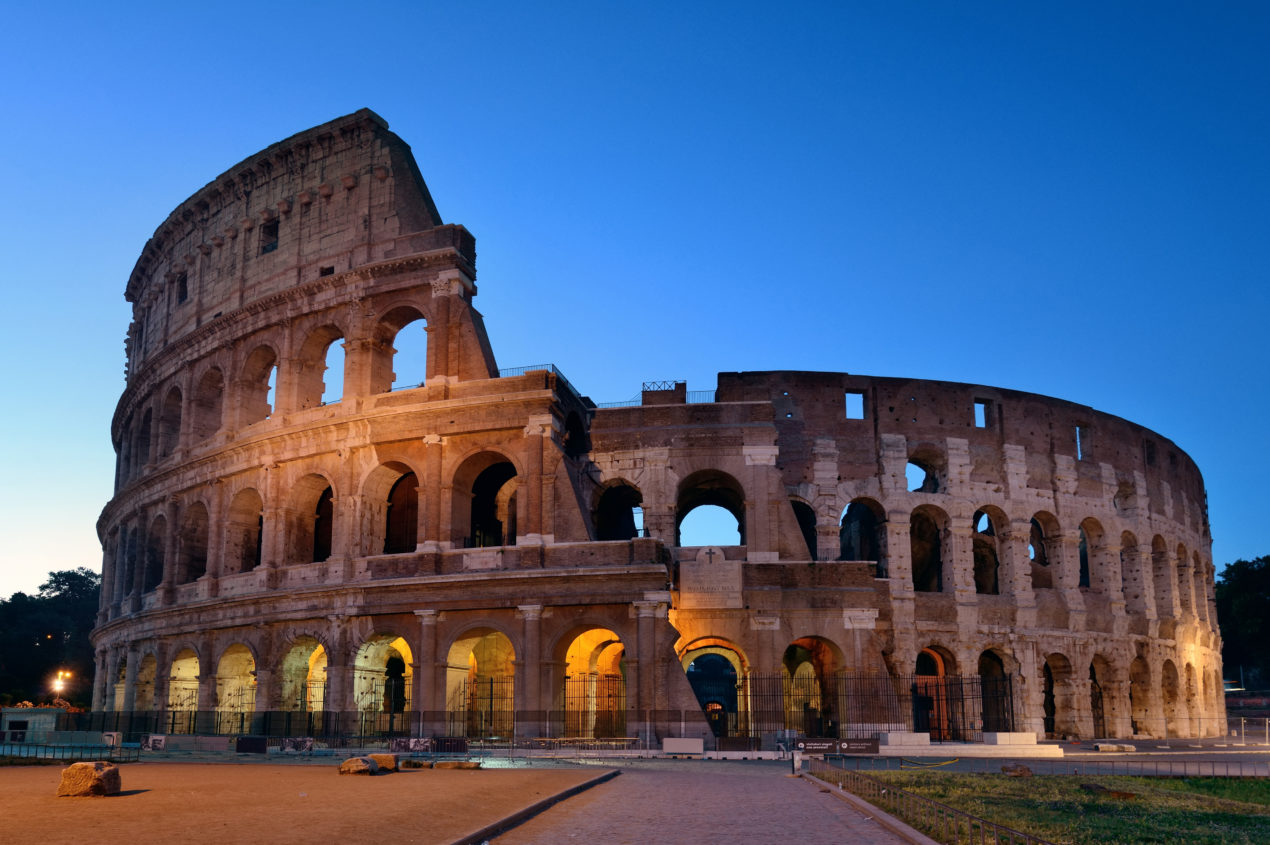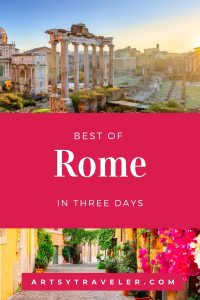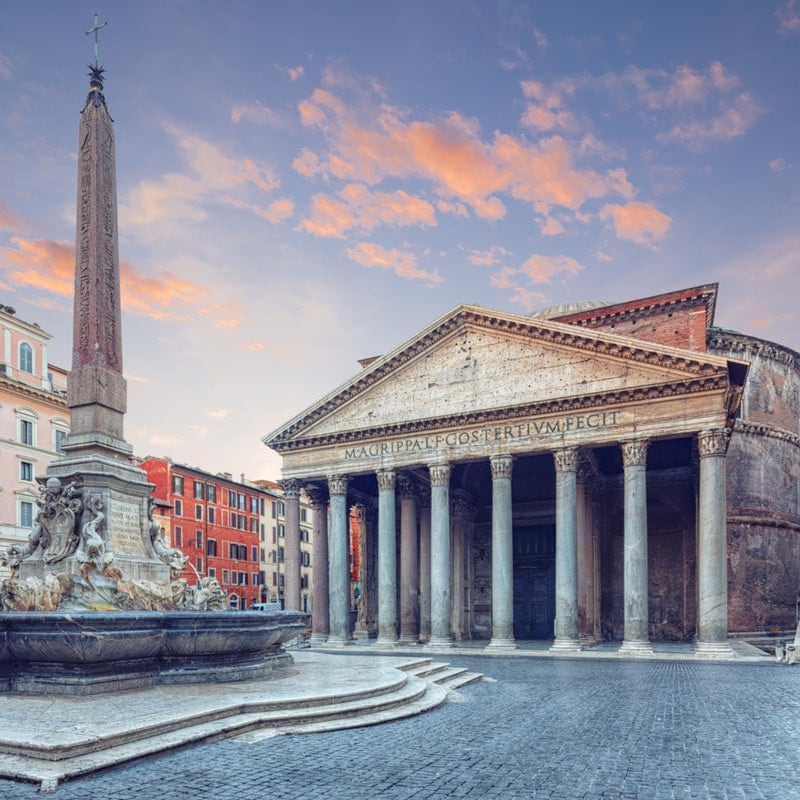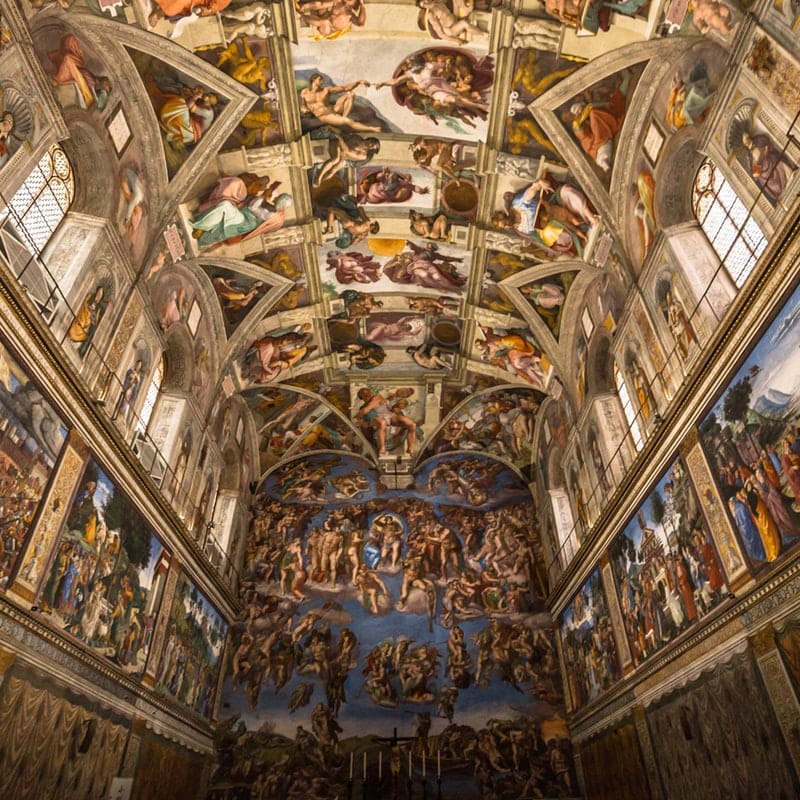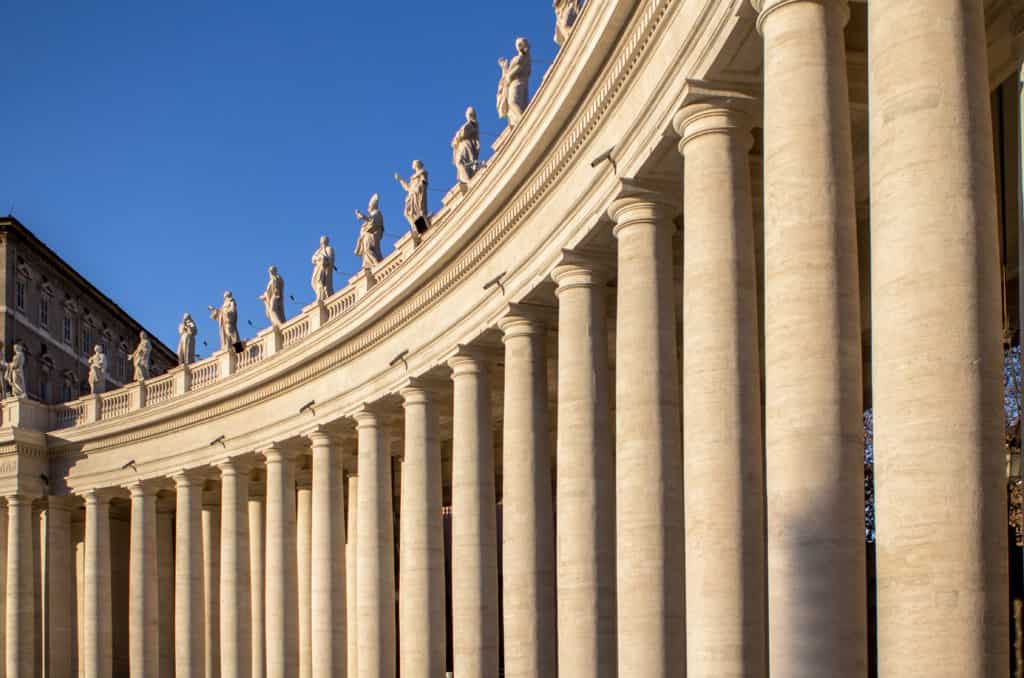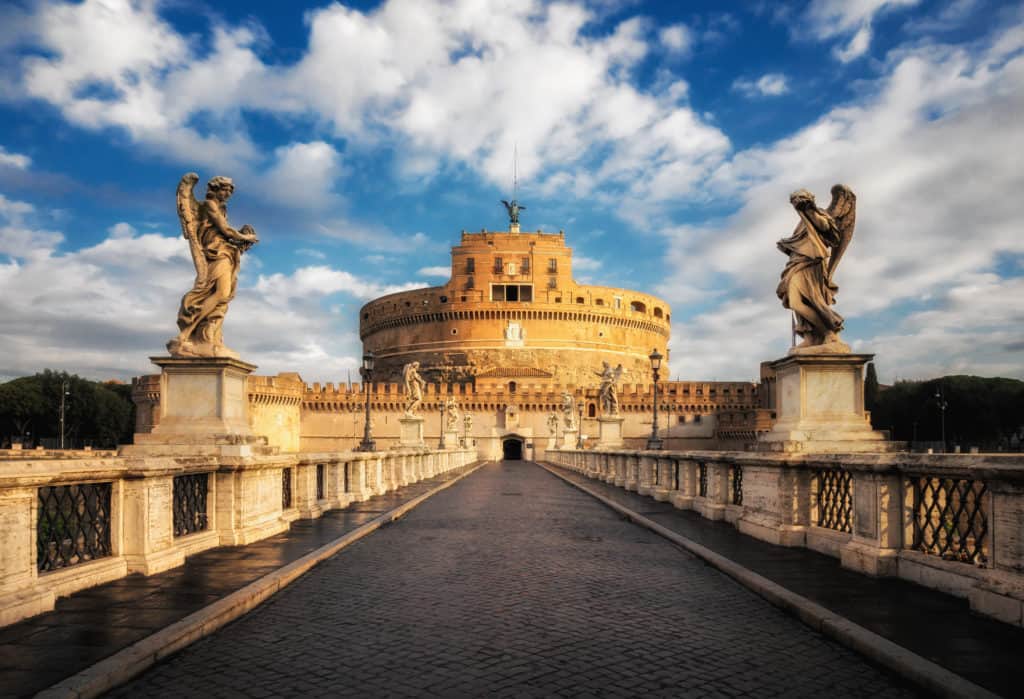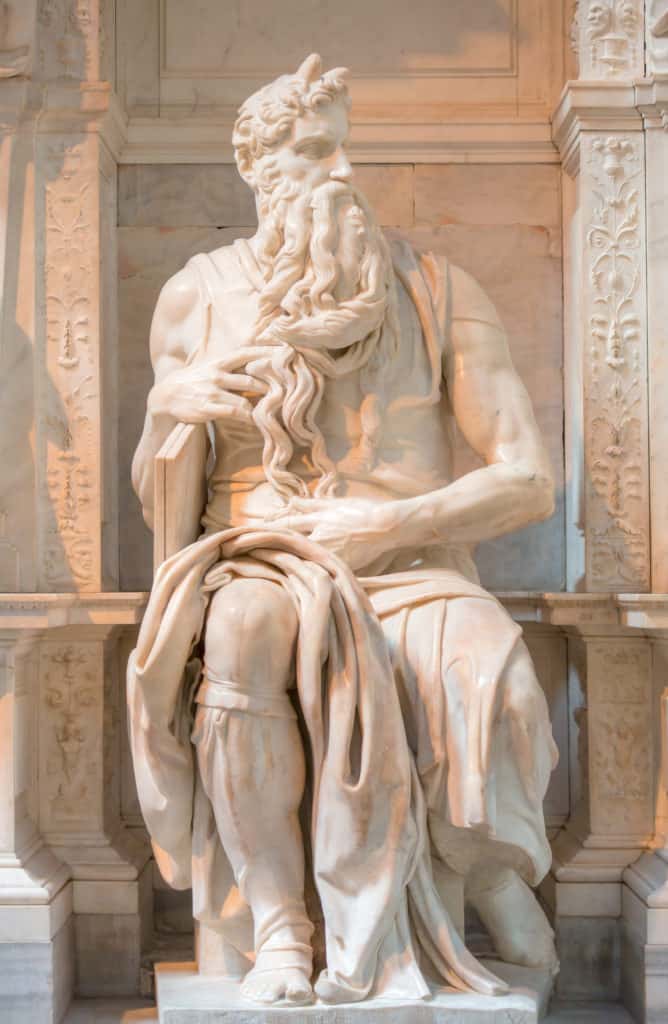Pizza, Gelato, Suppli–Oh My! A Fantastic Cooking Class in Rome
Fancy taking a cooking class while you’re visiting Rome?
I highly recommend the experience. I’m a huge fan of taking cooking classes when I travel around interesting locales that have unique cuisines.
So far, I’ve taken a market class and a French sauces class (sweet and savory) in Paris, a tapas class in Madrid, and a pasta & tiramasu class in Rome.
In this post, I share my experience taking a Pizza, Gelato, and Suppli-Making class in Rome.
Choosing a Class in Rome
Most cooking classes available in Rome are variations on the pasta/tiramasu class I took on an earlier trip to Rome. Fortunately, after a bit of searching on GetYourGuide, I discovered a pizza and gelato-making class.
Perfect! I signed up on Tuesday for the class on Friday.
EnjoyCooking.com with Crown Tours
I’d taken the pasta/tiramisu class with InRome Cooking, which I highly recommend. But this time, I decided to go with EnjoyCooking.com for the sake of variety and having a new company to write about on Artsy Traveler.
EnjoyCooking.com partners with Crown Tours to offer cooking classes in a lovely, brick-arched space next door to their tour office and across the street from the Colosseum.
The day before the class, I got a WhatsApp call from the company. The family that had signed up to take the class at the same time as me had canceled, leaving me on my own.
Did I want to postpone the class to the evening slot? I could not because in the evening, we had the opening of my husband Gregg Simpson’s art exhibition at Il Leone Galleria in Rome. I was assured that they were happy to still offer the class at the 10 am time slot even if I was on my own.
Lucky me!
Arrival at EnjoyCooking.com
I arrived on Friday morning and was ushered into the cooking space. There was room for eight people in a class so it was much more intimate than the class I took at InRome Cooking which hosted twelve people.
To my delight, there was one other woman in the class. Over the course of the next three hours, we bonded and had an awesome time.
Chef Marco!
But the biggest surprise was meeting the chef. In walked Marco–the same chef who had taught the pasta/tiramisu class at InRome Cooking.
I couldn’t believe it! I told him I’d taken his class and showed him the blog post. He was so excited!
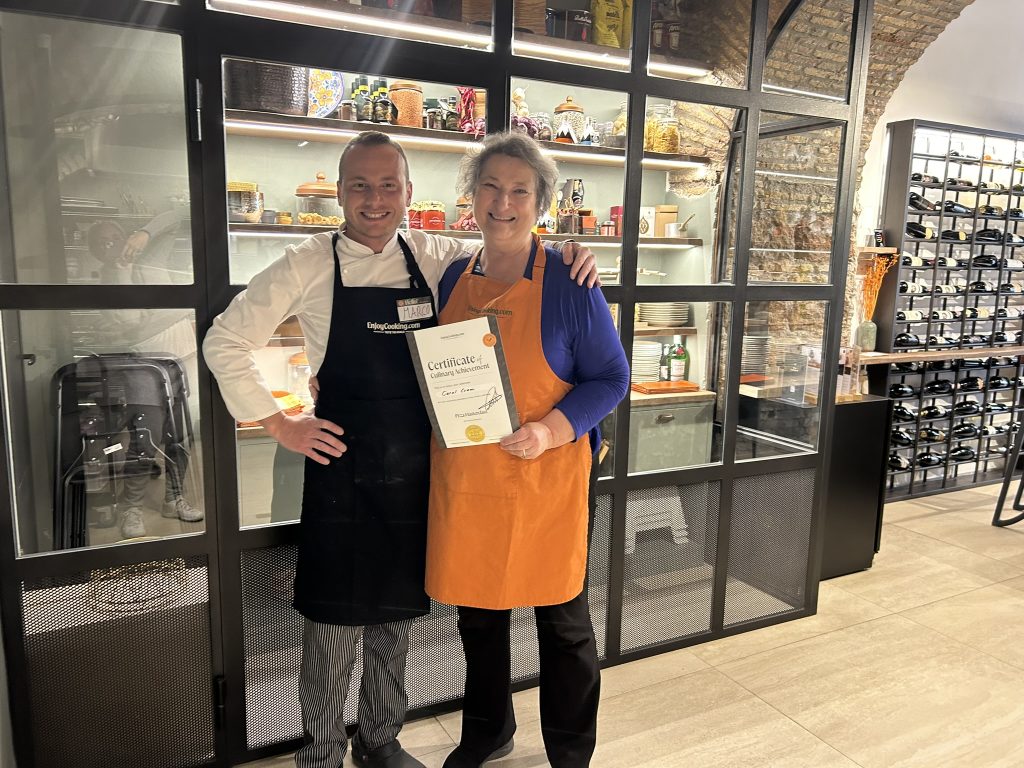
So that was a great way to kick off the morning.
Over the next three hours, Chef Marco led my new friend and me in a lively, hands on and informative class. I’m always amazed at how much I learn about cooking technique in these classes.
Gelato Making
We started with gelato. I discovered to my relief that the ice cream maker I’d purchased several years earlier could be dragged out, dusted off, and used to make gelato. Who knew?
We heated several pints of fresh milk in a pot over an electric hot plate. Marco informed us that the milk should be as fresh as possible–so fresh that it would spoil after three days.
Of course, getting milk that fresh is pretty much impossible in North America unless you live on a farm, which I don’t. But the next best thing is high quality organic milk.
We heated the milk and whisked in sugar followed by ten egg yolks and grated lemon zest to make limone gelato. The lemons had come from the Amalfi coast and smelled divine.
After mixing the gelato, we poured it into the commercial gelato maker that would produce perfect gelato within thirty minutes.
What an impressive looking machine!
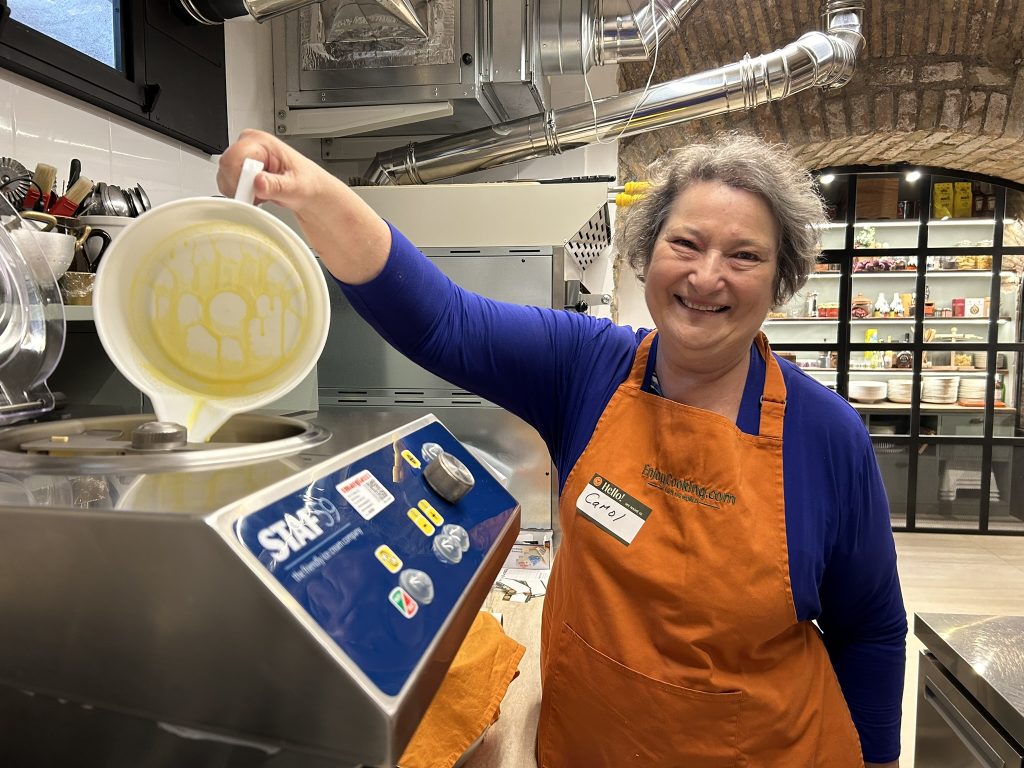
Marco informed us that we would also make raspberry sorbetto to go along with the limone gelato. Sorbetto is even faster and easier to make than gelato.
We mixed water with raspberries and once the gelato was made, we poured it into the gelato-maker (after the limone gelato was done, of course).
Here’s a video of the raspberry gelato being extruded from the gelato maker–an exceedingly beautiful and satisfying sight.
Suppli Making
I had never heard of suppli–a Roman street food that is widely available all over the city.
Marco showed us how to take rice cooked in tomatoes and form it around fresh cubes of mozzarella cheese, then bread and deep fry it. The result was a log-shaped rectangle that when still hot and pulled apart stretched the warm mozzarella cheese.
It was yummy but a bit rich for me at only 11 am!
But when in Rome!
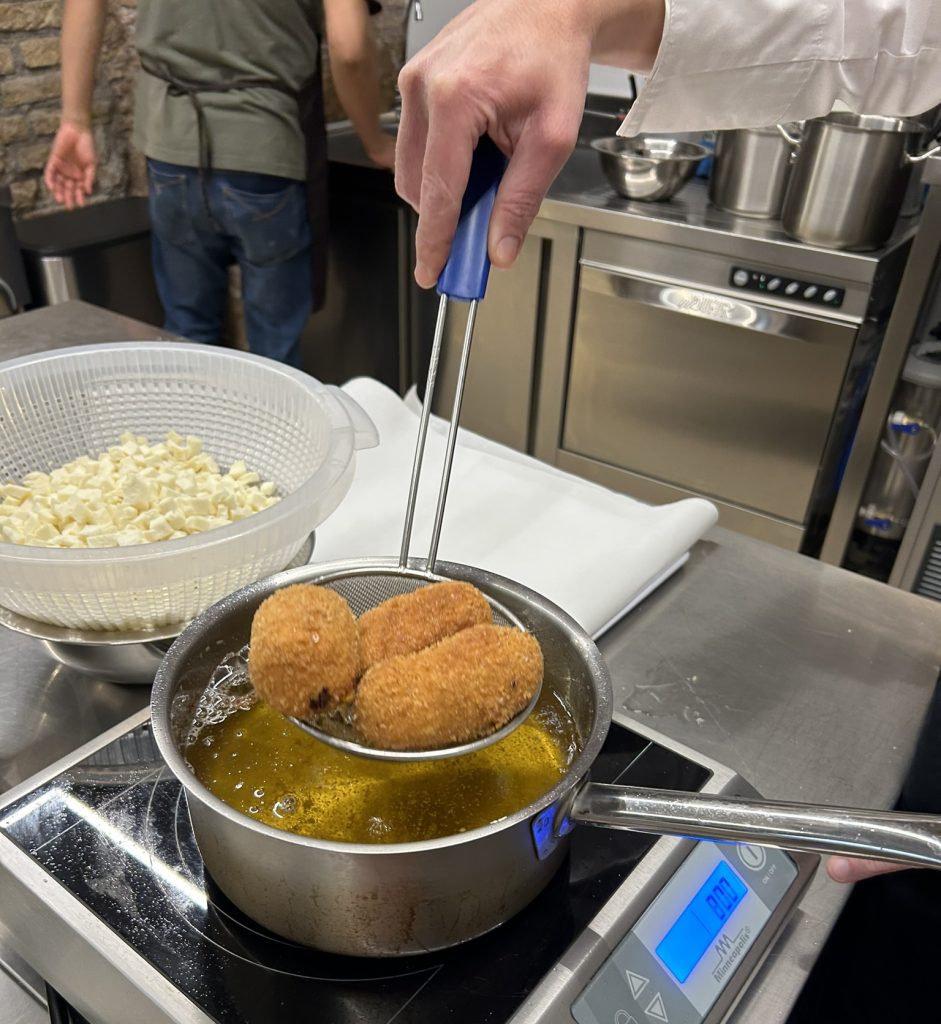
Pizza Making
The main event of the cooking class was making pizza the proper way–like they make piazza in Napoli where Marco was from.
I learned that the pizza dough should be rested for two hours after mixing and then rested in the refrigerator for up to three days.
That was something new to me. I’d always let my piazza dough rise for about an hour, if that, and then cooked it. Apparently, doing so results in dough that is still fermenting when it enters your tummy. Not good!
Mixing the Pizza Dough
We mixed the dough and kneaded it for about six minutes–a very satisfying process. The dough was light and very elastic.
It was then put away to rest and presumably used for a class the next day. Marco then produced dough that had already been rested and risen for a day, and we proceeded to learn how to shape the dough into a pizza.
Handling the soft, pliant dough was such a pleasure. We didn’t learn how to throw it in the air, but we did learn a few tricks I can apply back home.
Baking the Pizza
Another tip I learned was to slather on the tomato sauce first, bake the pizza for about six minutes in a home oven (much less in a high temperature commercial oven) and then add the toppings and cook for another three to four minutes.
Who knew? I also learned that certain toppings such as prosciutto should not be cooked, but added after the pizza came out of the oven.
For best results, I was told that I should get myself a pizza stone so that’s going on my Christmas list for next year!
Topping the Pizza
After baking the pizza with the sauce, we were offered a wide array of toppings to dress our pizza. My companion chose mozzarella cheese and fresh sausage.
I chose anchovies, mushrooms, olives, and of course mozzarella cheese. Here we are making our pizzas in front of the scrumptious assortment of toppings.
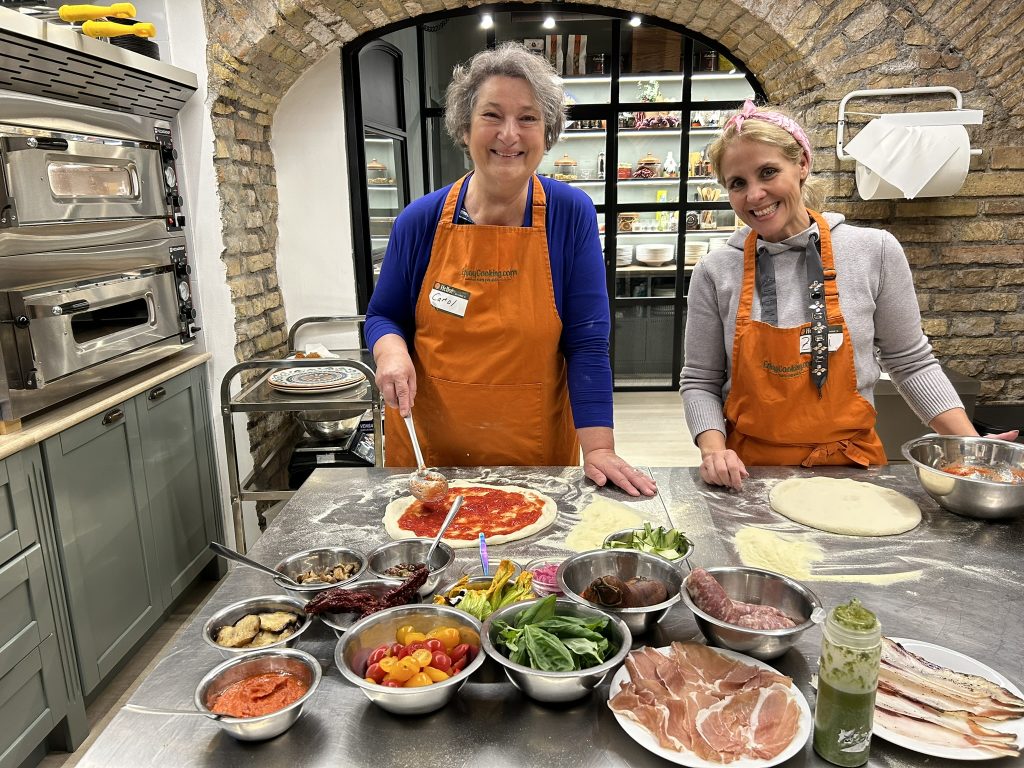
Finishing the Pizzas
The pizzas went back in the oven and voila! Within minutes they were being served to us.
The first bites were wonderful–the crust slightly charred and very puffed up (the sign of a good pizza) and the toppings fresh. I managed to get through three pieces before having to give up.
Marco thoughtfully put the remainder in a pizza box for me to carry home to Gregg.
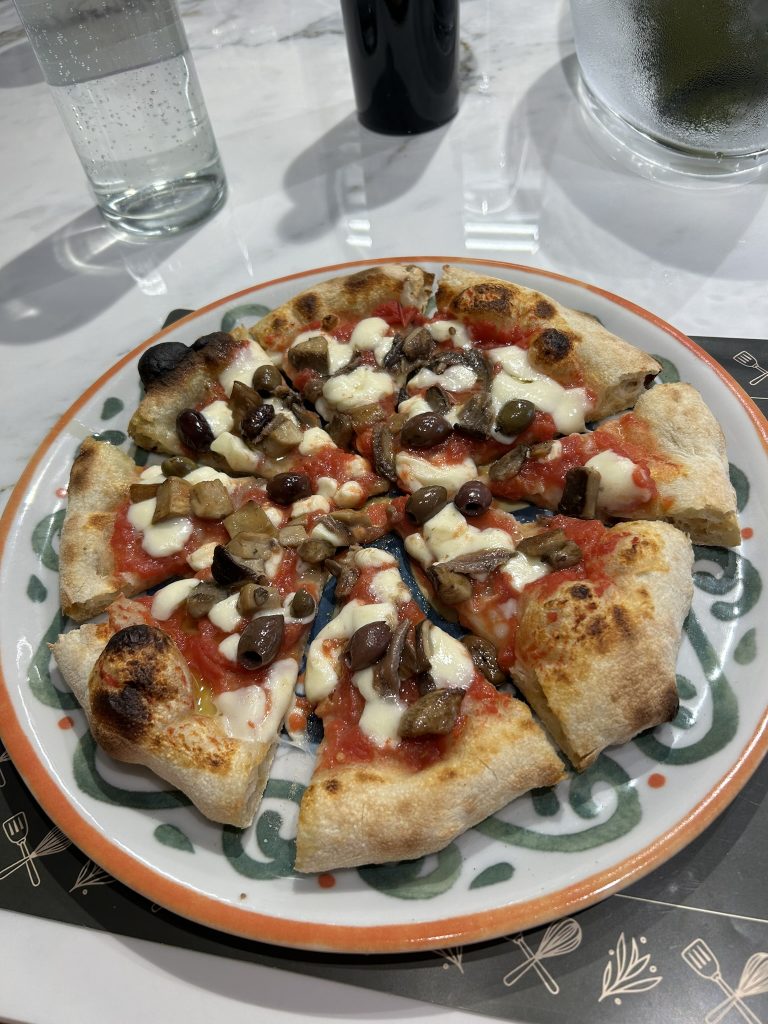
After pizza, we were served the gelato we’d made earlier. OMG!
The limone gelato, in particular, was truly to die for. I don’t think I’ve ever tasted a fresher and more delightful-tasking gelato. It puts the run-of-the-mill gelatos found in gelato stores to shame. As Marco said, it’s all about using the freshest ingredients.
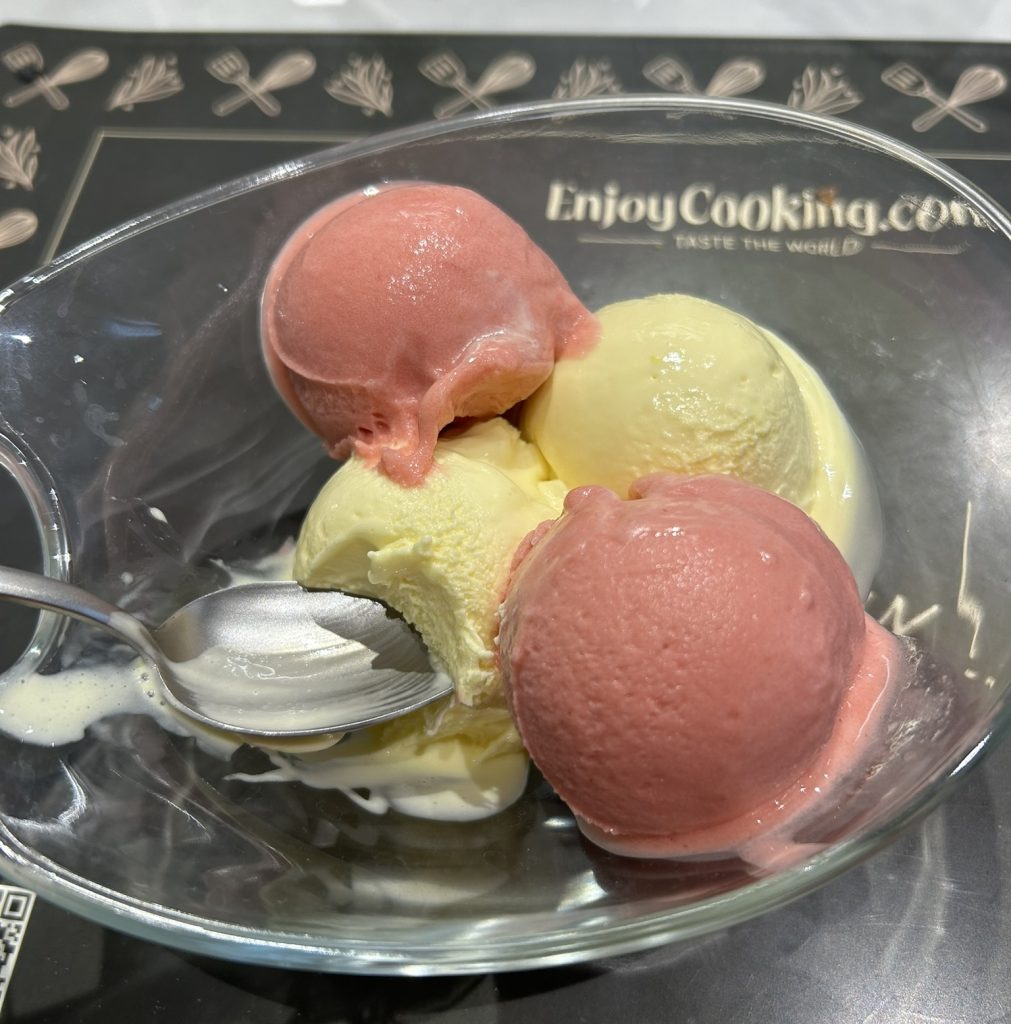
The class ended with me receiving my certificate and posing for a picture with Marco. I was thoroughly satisfied with my second Rome cooking experience in EnjoyCooking.com and Crown Tours.
A smile was on my face as I threaded my way through the crowds of tourists streaming past the Colosseum and Forum on my way back to our comfy little apartment in the Jewish Ghetto.
Thank you, EnjoyCooking.com and Marco for an excellent experience.
EnjoyCooking.com Class
Here’s a link to the cooking class I took through Crown Tours. As I’ve mentioned often on Artsy Traveler, I’m a very big fan of GetYourGuide.
More Cooking Classes in Rome with GetYourGuide
Here is a selection of additional cooking classes in Rome run by both Crown Tours and other companies.
Conclusion
Have you taken a cooking class while traveling? Share your experience in the comments below!
Other Posts about Cooking
Here are some more posts about cooking classes:


